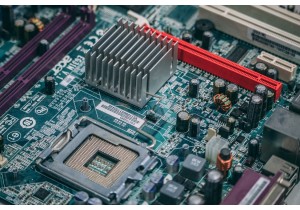In an era defined by technological advancements and the rapid electrification of industries, high-voltage capacitors have become critical components in powering innovations across sectors. From renewable energy systems to electric vehicles (EVs), these capacitors ensure efficient energy storage, voltage regulation, and noise suppression. However, selecting the right high-voltage capacitor is no simple task. Engineers must balance performance, reliability, and cost while aligning with evolving industry trends like IoT integration and miniaturization. This article explores the key considerations for choosing high-voltage capacitors, their advantages in modern applications, and the role of network-connected systems in shaping their future.
Understanding High-Voltage Capacitors
High-voltage capacitors are passive electronic components designed to store and manage electrical energy in circuits operating at voltages typically above 1,000 volts. They are constructed using dielectric materials (ceramic, film, or electrolytic) sandwiched between conductive plates, enabling them to withstand intense electric fields without breakdown. Common types include:
-
Ceramic Capacitors: Compact and ideal for high-frequency applications.
-
Film Capacitors: Known for stability and self-healing properties.
-
Electrolytic Capacitors: High capacitance in small sizes, suited for DC applications.
These capacitors are pivotal in applications like power inverters, medical imaging equipment, and pulsed power systems, where voltage stability and energy efficiency are non-negotiable.
Industry Trends Driving Demand
1. Renewable Energy Expansion
The global shift toward solar, wind, and grid storage systems demands capacitors that handle high voltages in inverters and converters. For instance, solar inverters require capacitors to smooth out DC-to-AC conversion, ensuring minimal energy loss.
2. Electric Vehicle Proliferation
EVs rely on high-voltage battery systems (400–800V) for fast charging and efficient power delivery. Capacitors here stabilize voltage in onboard chargers, motor drives, and regenerative braking systems.
3. Medical Imaging Advancements
MRI machines and X-ray equipment use high-voltage capacitors to generate precise electromagnetic fields, where reliability and safety are paramount.
4. Industrial Automation and Smart Grids
Automated machinery and smart grids require capacitors for power factor correction, reducing energy waste and enhancing grid responsiveness.
5. Miniaturization and High-Efficiency Demands
As devices shrink, capacitors must deliver higher performance in smaller footprints without compromising voltage handling or thermal resilience.
Key Considerations for Selecting High-Voltage Capacitors
1. Voltage Rating and Derating
-
Voltage Rating: Choose a capacitor with a voltage rating exceeding the circuit’s maximum operating voltage to prevent dielectric breakdown.
-
Derating: Operating at 70–80% of the rated voltage enhances longevity, especially in fluctuating or high-temperature environments.
2. Dielectric Material and Performance
-
Ceramic (Class II): Offers high capacitance density but lower stability at extreme temperatures.
-
Polymer Film (e.g., PP, PET): Provides self-healing capabilities and stable performance under high stress.
-
Aluminum Electrolytic: Cost-effective for high capacitance but prone to aging in high-temperature conditions.
3. Temperature Stability and Thermal Management
High-voltage circuits often generate significant heat. Capacitors with low Equivalent Series Resistance (ESR) and materials like X7R ceramic or polypropylene film minimize losses. Thermal management strategies, such as heatsinks or spaced PCB layouts, further mitigate risks.
4. Size and Form Factor
Miniaturization trends demand compact designs. For example, multi-layer ceramic capacitors (MLCCs) offer high voltage ratings in packages as small as 0201, while advanced film capacitors use metallized layers to reduce bulk.
5. Reliability and Lifespan
In mission-critical applications like aerospace or medical devices, capacitors must endure harsh conditions. Look for components with:
-
High Surge Voltage Tolerance: Essential for pulsed power systems.
-
Low Leakage Current: Prevents energy loss in storage applications.
-
AEC-Q200 Certification: Ensures automotive-grade reliability.
6. Cost-Effectiveness and Total Ownership Cost
While advanced materials like silver mica offer superior performance, their cost may be prohibitive. Balance initial expenses against lifespan, maintenance, and efficiency gains.
7. Compliance with Industry Standards
Ensure adherence to safety (UL, IEC) and environmental (RoHS, REACH) standards. For example, IEC 60384 governs fixed capacitors for electronic equipment, emphasizing safety and performance.
The Role of Network Integration in Capacitor Selection
The rise of IoT and smart systems has redefined how capacitors operate in connected environments. For example:
-
Smart Grids: Capacitors in grid storage systems must respond to real-time energy demand fluctuations, requiring low ESR and high ripple current handling.
-
Industrial IoT (IIoT): Predictive maintenance systems rely on capacitors with stable performance to avoid downtime in automated production lines.
-
5G Infrastructure: High-voltage capacitors in base stations must filter noise from high-frequency signals while withstanding temperature variations.
Network integration also demands capacitors that support dynamic load management. For instance, EV charging stations connected to smart grids use capacitors that adjust to variable power inputs, optimizing energy use and reducing wear.
Product Advantages in Modern Applications
1. Energy Efficiency in Renewable Systems
Film capacitors in solar inverters achieve >98% efficiency by minimizing losses during DC-AC conversion, directly impacting ROI for solar farms.
2. Safety in Medical Devices
High-voltage ceramic capacitors in MRI machines operate reliably at 1.5–3 Tesla fields, ensuring patient safety and image accuracy.
3. Durability in Automotive Systems
Automotive-grade MLCCs withstand engine vibrations and temperature swings (-55°C to 150°C), critical for EVs and ADAS technologies.
4. Precision in Industrial Equipment
Tantalum capacitors offer stable capacitance in CNC machines, reducing calibration downtime and improving manufacturing accuracy.
Future Innovations in High-Voltage Capacitors
Emerging technologies are set to revolutionize capacitor design:
-
Solid-State Capacitors: Eliminate liquid electrolytes for longer lifespans and higher temperature resilience.
-
Graphene-Based Dielectrics: Enable thinner layers with higher breakdown voltages, ideal for compact EV batteries.
-
Integrated Smart Sensors: Capacitors with embedded sensors to monitor health and predict failures in real-time, aligning with IIoT trends.
Conclusion
Selecting the right high-voltage capacitor requires a holistic understanding of application demands, industry trends, and technological advancements. From voltage derating to IoT readiness, each consideration plays a pivotal role in ensuring efficiency, safety, and cost-effectiveness. As industries continue to push the boundaries of power density and connectivity, capacitors will evolve from passive components to intelligent, adaptive solutions. By prioritizing the factors outlined here, engineers can future-proof their designs and harness the full potential of high-voltage systems in a rapidly electrifying world.

